The yoga for back pain and sciatica and travels deep down the buttocks, thighs, and side of the legs. Sciatica is caused by compression, inflammation, or damage to the sciatic nerve or the lower vertebrae. Sciatica can also be caused by muscular tension, overuse, or injury.
What Is Yoga For Back Pain And Sciatica
Sciatica pain is a painful, throbbing, or burning feeling that travels down the leg. You may also experience numbness, tingling, or irritation. Sciatica is often felt just on one side of the body.
Sciatica can be a small irritation that causes mild discomfort, but it can also cause severe agony.
A 2013 research indicated that yoga positions including Cobra and Locust Pose can help alleviate sciatica discomfort. According to 2017 research (Trusted Source), yoga can help with:
- reduce chronic lower back pain
- improve limitations in activity
- reduce the use of pain medications
Let’s take a deeper look at how you can use the therapeutic applications of yoga to prevent, soothe, and heal sciatica.
Recommended to read: 6 AMAZING YOGA POSES TO TREAT EPILEPSY.
1. Child’s Pose (Balasana)
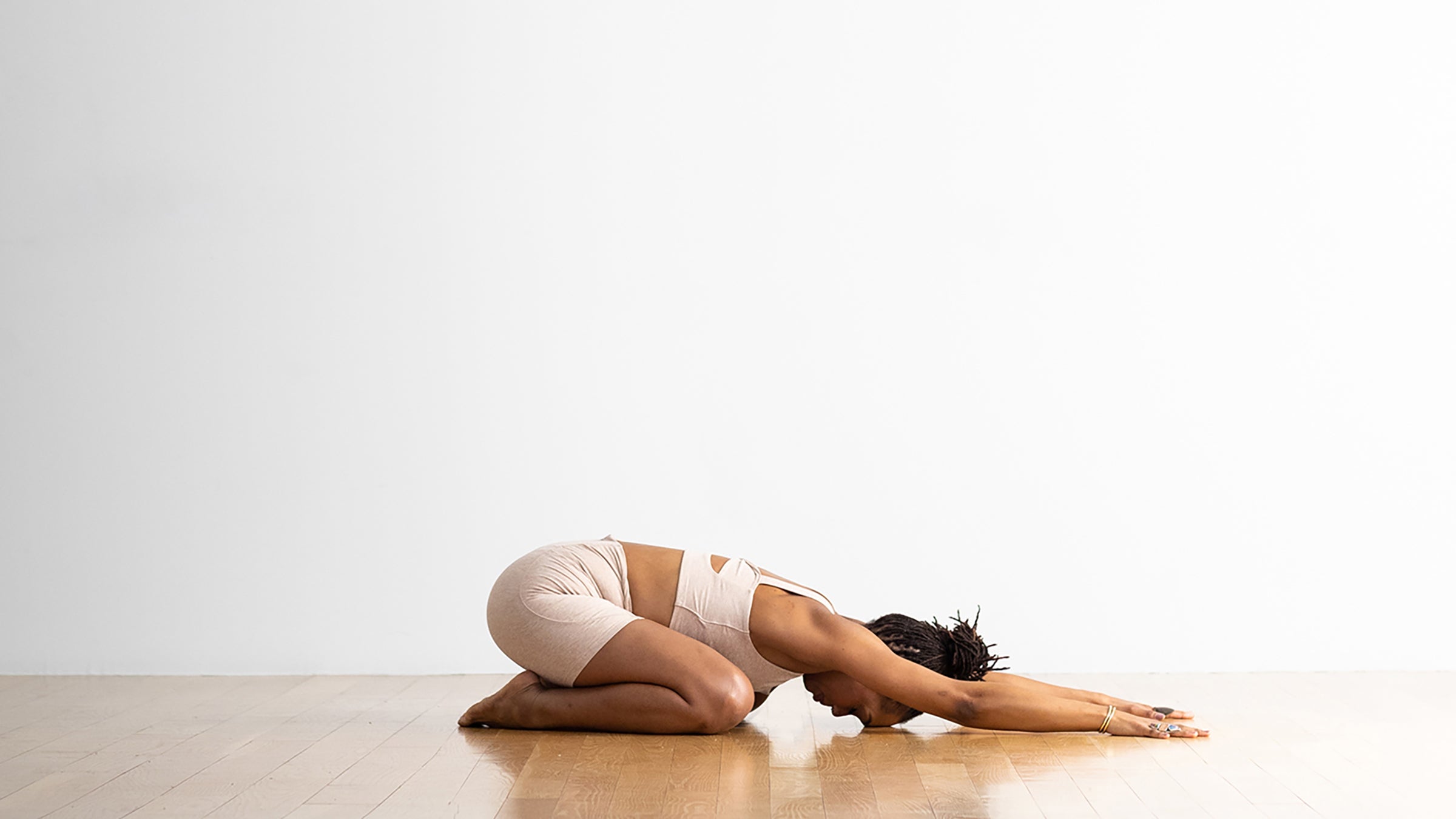
Child’s Pose is a wonderful way to tune into and relax your body. It lengthens and stretches your spine, promoting flexibility and openness in your hips, thighs, and lower back.
For more support, place a cushion or bolster under your thighs, chest, and forehead.
- Begin on your hands and knees. Bring your knees together and sink your hips back to your heels.
- Extend your arms in front of you or let them rest beside your body.
- Allow your body to totally relax as you sink down into your thighs.
- Deepen your breath to relieve any tightness or sensations.
- Hold this position for up to five minutes.
2. Downward-Facing Dog
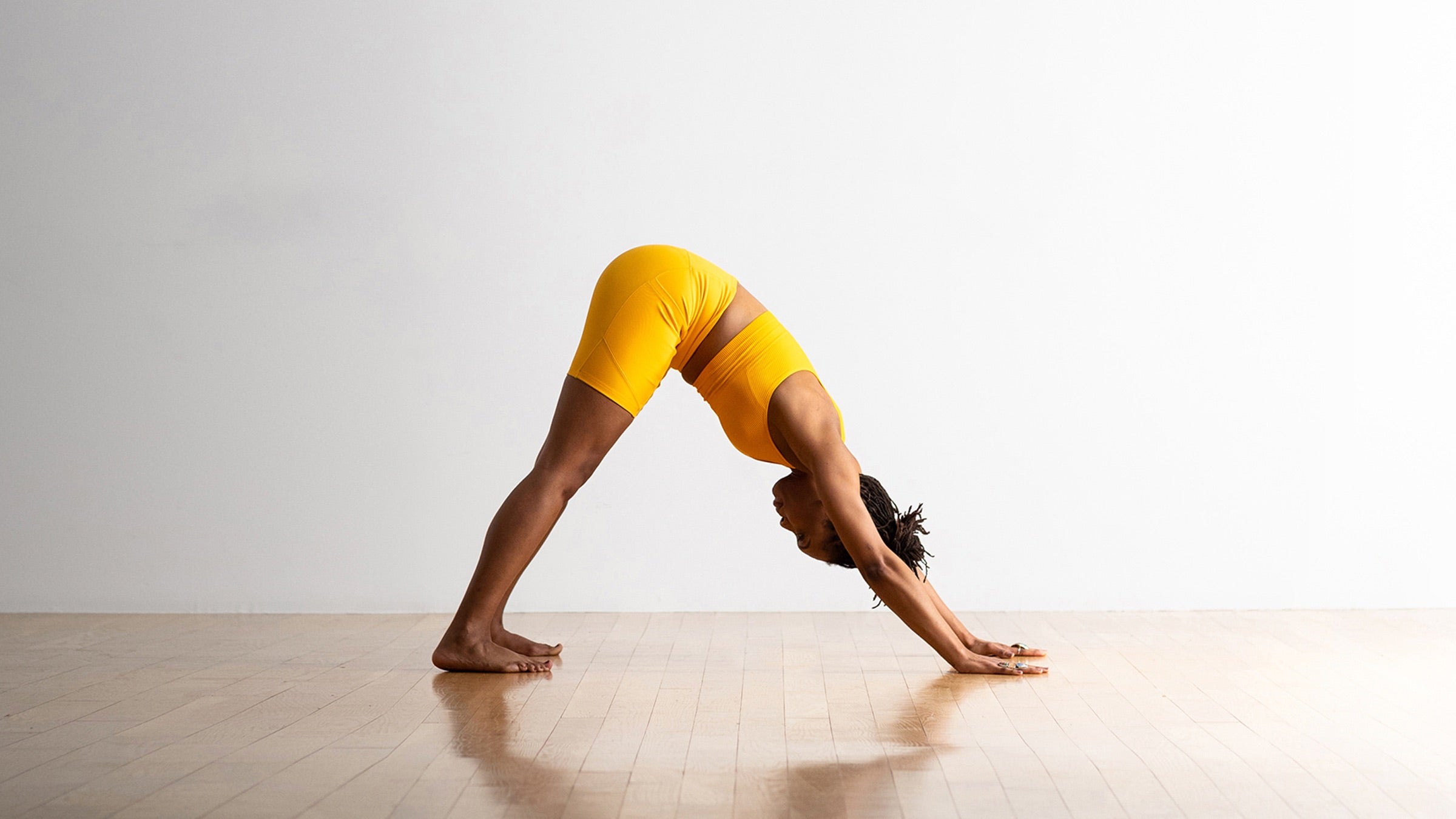
This forward bend helps bring your body into alignment, relieving pain and tightness. Downward-Facing Dog promotes strength in your entire body while helping to correct imbalances.
- Begin on your hands and knees. Lift your hips toward the sky, pressing onto your hands.
- Drop your head down to align your ears with your upper arms, or tuck your chin all the way in into your chest.
- Bend your knees, tilting your pelvis slightly forward.
- Move your body in whatever way that seems natural to you.
- Hold this stance for up to one minute.
Read also: HOW TO PRACTICE MINDFULNESS MEDITATION
3. Half Moon Pose (Ardha Chandrasana)
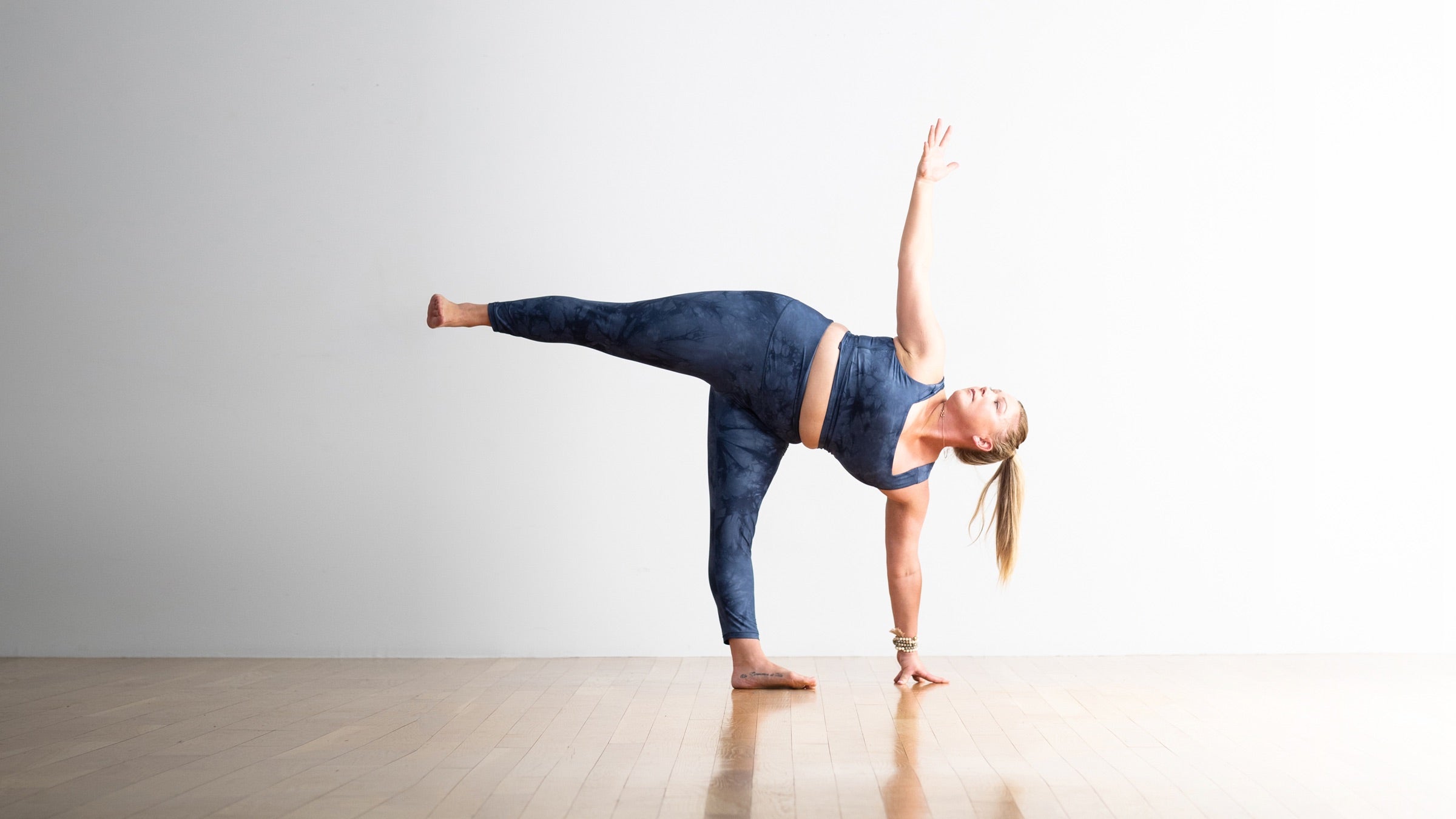
Half Moon Pose strengthens, stabilizes, and balances your body. It increases flexibility, relieves tension, and stretches your spine, glutes, and thighs.
Stay supported by doing this pose against a wall. You can place a block under your hand.
- Begin in a standing position, such as Triangle, with your right foot in front.
- Bend your right knee slightly further and shift your weight to your right foot.
- Bring your left hand to your hips.
- Slide your left foot forward a few inches, then stretch your right hand to the floor in front and to the right of your right foot.
- Lift your left leg parallel to the floor and press out through your left heel.
- While looking ahead, rotate your torso and hips wide.
- Lift your left hand up toward the ceiling and direct your attention upward.
- Hold this stance for up to one minute.
- Bend your right leg and drop your left leg to the floor to slowly return to the starting position.
- Repeat on the other side.
Read also: 10 KEY TIPS FOR CREATING A SUCCESSFUL YOGA LIFESTYLE.
4. Cobra Pose (Bhujangasana)
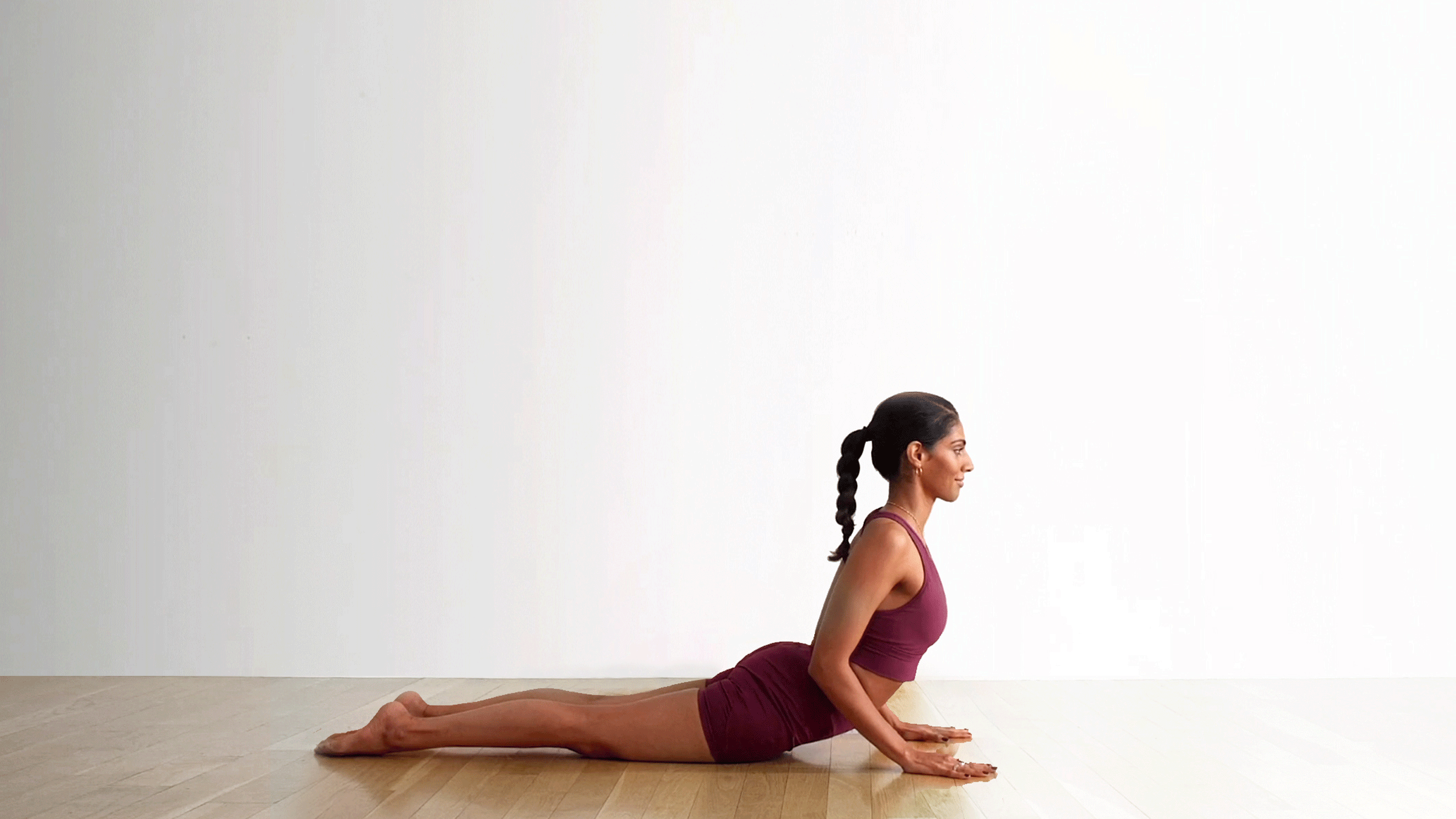
This soothing pose strengthens and stretches your spine, promoting circulation and flexibility.
- Lie on your stomach, hands under your shoulders.
- Squeeze your elbows to your body.
- Inhale and elevate your head, chest, and shoulders.
- Maintain a small bend in your elbows while keeping your chest wide.
- Engage your thighs, lower back, and abs.
- Hold for up to 30 seconds.
- Release the stance, relax, and repeat 1-3 times.
5. Locust Pose (Salabhasana)
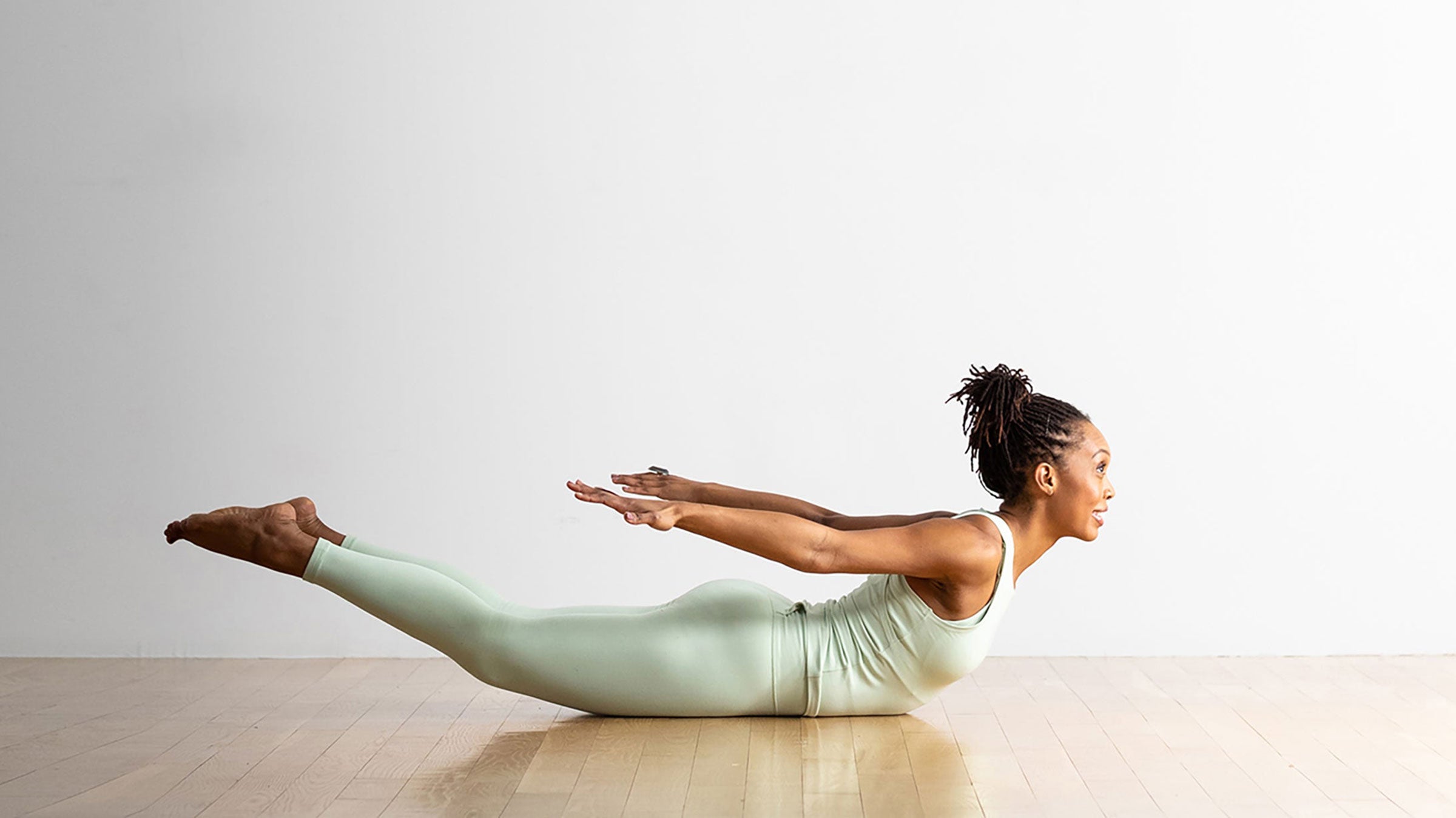
This pose strengthens your spine, glutes, and thighs. It stabilizes your core and lower back. It also promotes circulation and flexibility in your hips.
- Lie on your stomach, fingers interlocked at the base of your spine.
- Slowly raise your torso, head, and arms as high as you can.
- Lift your arms up and away from your body.
- To move deeper, elevate both legs or one at a time.
- Engage your glutes, lower back, and abs.
- Hold for up to 30 seconds.
- Release the posture and return to your starting position.
- Rest and relax your body for a few minutes, then softly move your hips from side to side.
Read also: TOP 5 MEDITATION TECHNIQUES FOR BEGINNERS TO LEARN
Yoga Positions To Avoid If You Have Sciatica
When you have sciatica, you should avoid some yoga positions since they might exacerbate the pain. Listen to your body and acknowledge how you're feeling without forcing yourself into any unpleasant positions.
Experiment and find what works best for you on any particular day. Avoid any stance that causes any pain.
Seated and standing forward bends (other than Downward-Facing Dog) should be avoided since they can generate additional strain in the pelvic and lower back. Forward bends may be performed while lying down and facing up. This provides support for your hips and lower back.
Because sciatica generally affects just one leg, you may be able to perform specific postures on only one side of your body. This is fine. Feel free to bend your knees in any position. Place pillows beneath your knees in any seated position that creates pain.
You may also read:
- A BEGINNER'S 10-MINUTE MORNING YOGA ROUTINE.
- BEGINNING YOGA POSITIONS FOR STRENGTH, FLEXIBILITY
- DIFFERENCES BETWEEN HATHA AND VINYASA YOGA.
- THREE WAYS TO MEDITATE FOR BETTER SLEEP
Common Causes of Sciatica Pain
Sciatica may be caused by various factors. These mainly include:
- Disc Herniation
- Spinal Stenosis
- Spondylolisthesis
- Degenerative Disc Disease
- Obesity, Accident, and Injury
- Piriformis Syndrome
Conclusion:
Yoga has been clinically proved to help alleviate sciatica and other types of back pain. All of the yoga positions listed in this article serve to restore the body's muscles to their natural equilibrium. As a result, it is advised that persons suffering with LBP incorporate yoga into their daily routines in addition to normal medical treatment.
Statistics show that both young individuals and the elderly are at greater risk of developing sciatica nerve pain. While we may not be able to control every reason, maintaining healthy behaviors can assist. And yoga is one of the most effective methods to take care of our physical bodies in a low-impact, safe manner.
Also read: WHAT IS THE FINEST KIND OF MEDITATION

